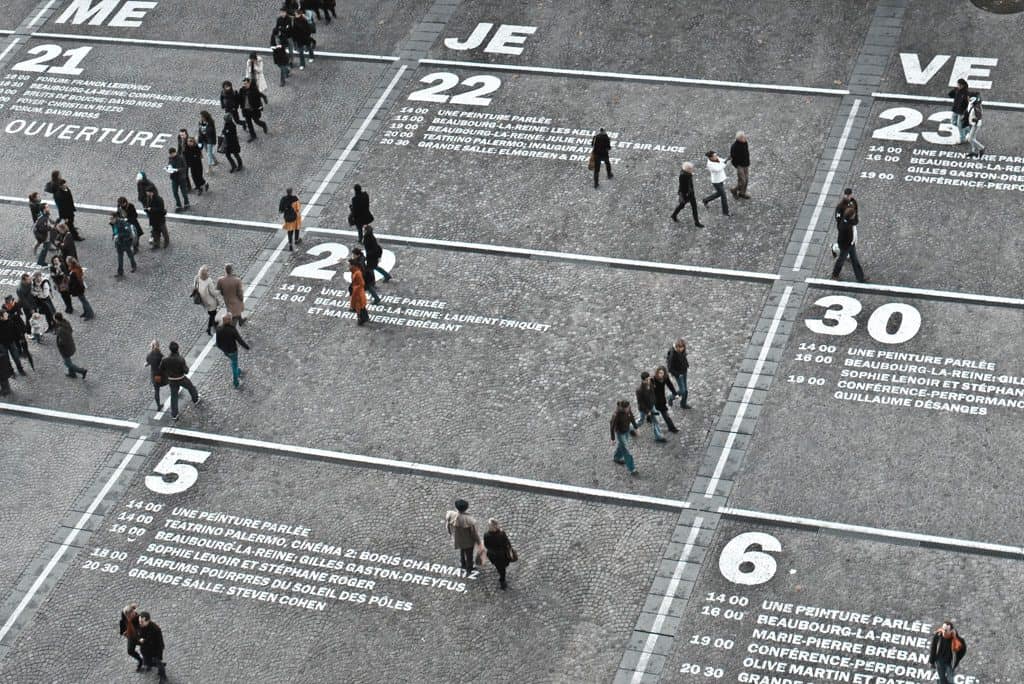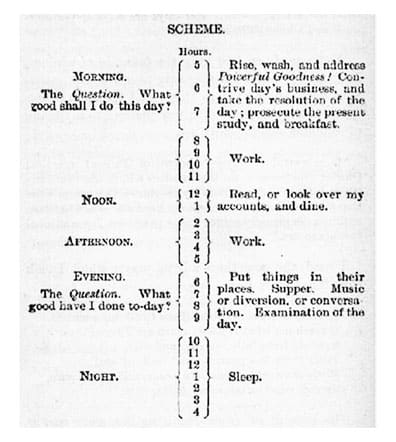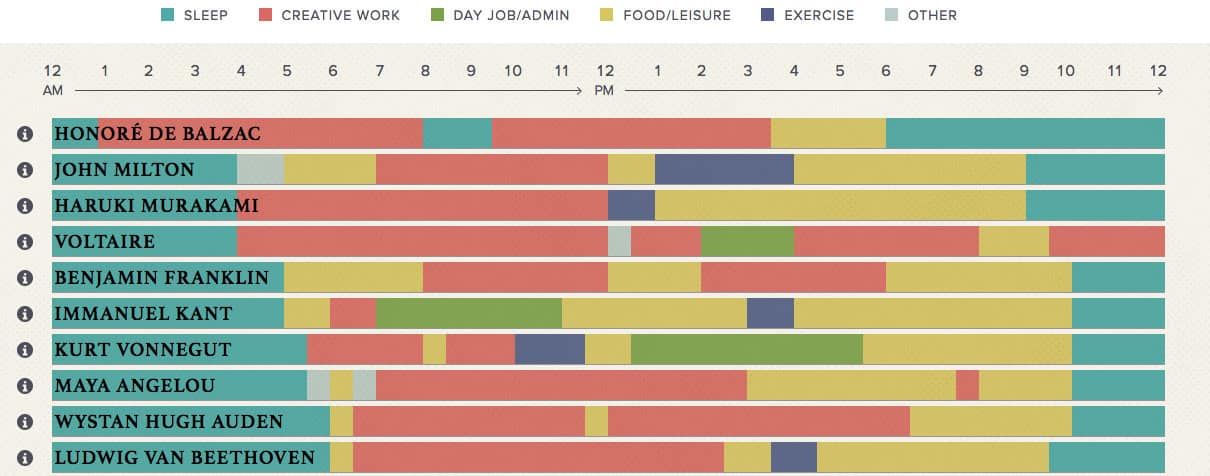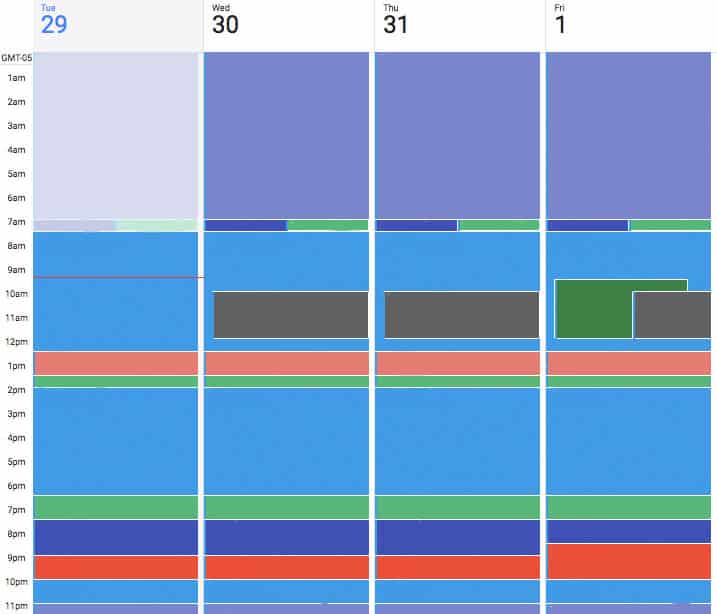I really think I’ve tried just about every productivity and to-do list tip, trick, hack, and app. Trying to make a day seem more like a day and a half. In the past, I definitely fell into the societal belief that more is better. But, no matter our approach to our days, the reality is that there are still only 24 hours.
So, instead of cramming as much as possible into any given day, I now believe that better is better. That often means that less is better. So, how do you do less but better and actually increase efficiency and effectiveness?
Enter time blocking…

What is Calendar Time Blocking?
Time blocking is a process of taking tasks from your to-do list and intentionally scheduling them on your calendar for a set period of time.
Your to-do list is as simple that — just a list of things. Even if your to-do list is in rank order of priority, there is no time associated with the tasks. Time blocking takes your priorities and puts them in a calendar format. After all…
- “What gets scheduled gets done.” — Daniel Pink
FastCompany¹ and Forbes² have both touted the benefits of time blocking. There are a couple principles that time blocking helps protect yourself against:
- Zeigarnik Effect³: “People remember uncompleted or interrupted tasks better than completed tasks” — By having everything scheduled, you don’t have to use as much mental capacity to constantly think about uncompleted tasks.
- Parkinson’s Law4: “Work expands so as to fill the time available for its completion” — Same goes here. Scheduling tasks allows you to put a start and end time to them so they don’t constantly linger forever.
Inspiration from the Most Famous Time Blocking Masters
Here’s Benjamin Franklin’s daily routine from his autobiography:

Check out 25 more examples of daily routines from famous creative people. Here’s a preview:

7 Calendar Time Blocking Pro Tips
1. Identify your life roles: You can only have so many life roles, so it’s important to identify who you are and who you are not. You can use the four burners theory to help you here. Say “no” to as much as possible.
2. Define what is important: Once you’ve identified your life roles, you can identify what’s important to you and those roles. Apply essentialism here. “What’s important now? After a moment of reflection I realized that until I knew what was important right now, what was important right now was to figure out what was important right now!” — Greg McKeown, author of Essentialism
3. Understand your energy and when it’s best to use it: Daniel Pink’s new book, When, is a whole new category of self-help books (it’s not a how-to book, it’s a when-to book). Check out my summary of When here. It’s all about structuring your day around your type, your tasks, and your time.
4. Single-task to get more done: There’s a growing amount of research that shows that single-tasking, deep work, and getting into flow states allow you to be much more productive.
5. Plan for breaks and create margin in your schedule: No one can productively go from task to task to task without taking a break or having some down time. Daniel Pink talks about the power or restorative breaks, and creating margin was one of my biggest takeaways from Erin Loechner’s book Chasing Slow.
6. Time block on the weekend for the week ahead: I time block time to time block! My preferred time to do this is on Sunday nights before I go to bed.
7. Try Google Calendar for your time blocking: Here’s a screenshot of my actual calendar for a few days this week (with personal details removed). There’s time blocked for eating breakfast, morning work, working out, lunch, afternoon work, dinner, home to-dos, calling my family, hanging out with my wife and dogs, reading, getting ready for bed, sleeping, personal appointments, home maintenance appointments, you name it. I use different colors that coordinate with the type of task (sleeping, eating, working, exercise, etc).

Give Time Blocking a Try and Stick with It
What you’ll likely realize the first time you attempt to time block your day or week is that you run out of space on the calendar pretty quickly. Either that, or you’ll underestimate the amount of time it actually takes to do something.
You’ll get the hang of it over time, and you’ll become a more accurate time forecaster and build a routine based on consistency.
Time blocking also allows you to see where you struggle and veer off course throughout the day. Where are the areas or times of day where you notice yourself logging into Facebook or heading to shopping sites? Time blocking gives you a new perspective on time and how you use it so you can get your most important stuff accomplished.
“Time blocking is one of the best ways of turning good intentions into action.” — Paul Minors
You can follow Sloww via email using the form field below this post or on social media (@SlowwCo) on Twitter, Facebook, Instagram, Pinterest, Medium, Reddit, and Quora.
Sources:
- https://www.fastcompany.com/3069293/could-time-blocking-replace-your-to-do-list
- https://www.forbes.com/sites/kevinkruse/2017/04/19/why-highly-productive-people-use-time-blocking/#2930279a65e1
- https://en.wikipedia.org/wiki/Zeigarnik_effect
- https://en.wikipedia.org/wiki/Parkinson%27s_law




